Bitbucket vs RhodeCode
May 29, 2023 | Author: Michael Stromann
13
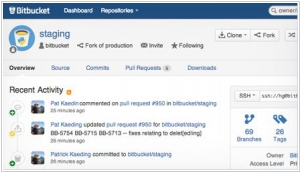
Bitbucket is a free code DVCS hosting site for Git and Mercurial. Manage your development with a hosted wiki, issue tracker and source code. Host, manage, and share Git and Mercurial repositories in the cloud. Free, unlimited private repositories for up to 5 developers give teams the flexibility to grow and code without restrictions.
6
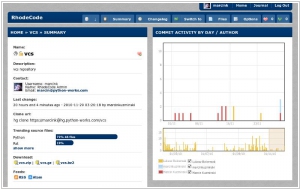
RhodeCode Enterprise is the secure collaboration environment that works the way you do — with your workflows, your permissions, on your platforms. Safely tucked behind your firewall. Increased project security and permissions control along with real-time repository news feeds give managers a birds eye view on project progress and complete control over access to highly sensitive data, driving projects to come in on-time and under budget with no compromise on either productivity or security.
See also:
Top 10 Issue and Bug Trackers
Top 10 Issue and Bug Trackers
Bitbucket and RhodeCode are both popular version control platforms, but they have different features, deployment options, and target audiences. Bitbucket, owned by Atlassian, is a cloud-based version control system that provides Git and Mercurial repositories. It offers a range of features for code collaboration, continuous integration, and project management, including integrations with other Atlassian products like Jira and Confluence. Bitbucket primarily targets teams and organizations of all sizes, offering both free and paid plans. On the other hand, RhodeCode is a self-hosted version control platform that supports Git and Mercurial repositories. It focuses on providing enterprise-grade security, scalability, and control. RhodeCode offers advanced access control, audit trails, fine-grained permissions, and support for high availability deployment. It caters to larger organizations with specific security and compliance requirements.
See also: Top 10 Issue Trackers
See also: Top 10 Issue Trackers
Bitbucket vs RhodeCode in our news:
2016. Atlassian launches Bitbucket Pipelines
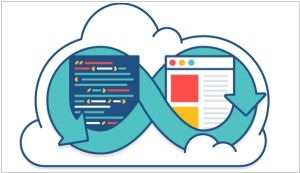
Atlassian has introduced Bitbucket Pipelines, a groundbreaking continuous delivery service seamlessly integrated into the Atlassian-hosted Bitbucket Cloud platform. This powerful feature enables developers to automate their code building and deployment process whenever they make updates to their Bitbucket repositories. As part of the beta phase, Bitbucket Pipelines is available at no cost for developers interested in exploring its capabilities. Additionally, Atlassian has made other notable updates, including the launch of Connect for JIRA Service Desk, which empowers third-party developers to create embeddable add-ons for this service. Moreover, Atlassian has made RADAR, its internal tool for generating API documentation, open source, aligning it with the specifications of the Open API Initiative.
2015. Atlassian merges Bitbucket and Stash developer services
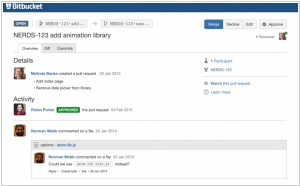
Atlassian has been providing a range of developer services based on Git through its brands Bitbucket and Stash. These services cater to developers who require either cloud-based or on-premises code management solutions. However, the company is now consolidating these brands into a unified Bitbucket platform and introducing several new features for its Git-based services. Additionally, Atlassian is unveiling three significant enhancements for Bitbucket. The first feature is Git Mirroring, designed to simplify and accelerate the usage of Git for distributed teams. The second feature addresses a long-standing challenge of Git—support for large files. Lastly, Bitbucket introduces support for projects, enabling more streamlined organization of complex Git repositories. Notably, Bitbucket now competes with other enterprise Git services, including GitHub Enterprise. Even Microsoft has embraced Git support in its Team Foundation Server products.
2015. Code management service Bitbucket opens to third-party extensions
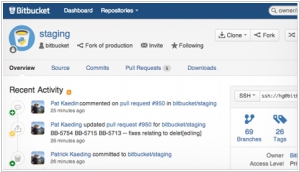
Bitbucket, Atlassian's code management service similar to GitHub, is receiving a significant update this week. The new feature, called Connect for Bitbucket, allows third-party tools to seamlessly integrate their applications directly into the Bitbucket service. Atlassian emphasizes that this integration empowers developers to access all the necessary information for code deployment in a single location, eliminating the need for constant switching between disjointed tools. According to the company, no other product on the market offers this level of integration within the product's user interface. The launch partners for this feature encompass a range of services, including code analytics platforms such as StiltSoft and bitHound, cloud IDEs like Codeanywhere and Codio, and Sourcegraph's code search tool. Currently, there are approximately a dozen available plug-ins, providing users with expanded capabilities and a more streamlined workflow within Bitbucket.
2014. Enterprise code management service RhodeCode get $3.5M funding

The Berlin-based company, RhodeCode, which specializes in behind-the-firewall application lifecycle management, has successfully secured $3.5 million in funding. Initially positioned as a direct competitor to platforms like GitHub, RhodeCode realized that its primary customer base consisted of large enterprises, including the U.S. Navy and Department of Energy. These organizations were hesitant to store their valuable code in the public cloud. As a result, RhodeCode made the strategic decision to discontinue its software-as-a-service offering and shift its focus towards the behind-the-firewall RhodeCode Enterprise product. This change allows the company to cater specifically to the needs of enterprises seeking secure and private code management solutions.
2014. Atlassian brings Stash to large enterprises
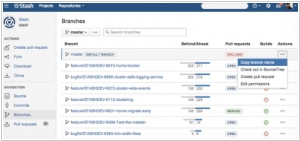
Stash, the code management software by Atlassian designed for Git, originally catered to small teams. However, Atlassian has now introduced Stash Data Center, a Git solution tailored for large enterprises. Unlike the regular Stash service, Stash Data Center is capable of operating on a cluster instead of a single server. This enhancement allows Stash to effortlessly support up to 10,000 developers. Stash Data Center maintains the same interface and functionality as the current version, ensuring a seamless transition for its users. They may observe reduced slowdowns, faster compilation times, and minimal downtime, while their daily workflows remain unaffected. Atlassian expects that Stash Data Center users will deploy the service within their own clusters, protected by firewalls. Additionally, there are plans to enable Stash Data Center to operate on public clouds such as AWS in the future.



